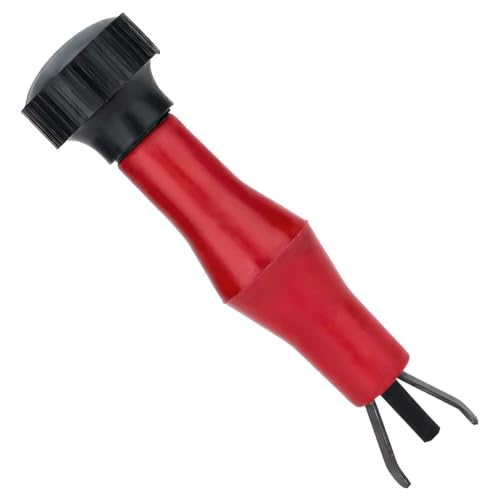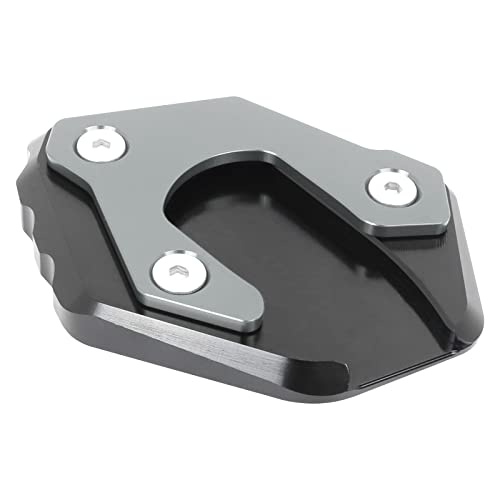beeroux
Well-known member
Well I remember my first ride with the excellent Tanji fuel cell. I was streaking along the Mojave outback headed for the Twist and Shout rally staging in Flagstaff, AZ. I'm bopping along when I notice headlights and horn behind me. I slow down and the car pulls up to my left in the opposing lane, the passenger pointing frantically towards the rear of my bike. WTF?
I pull over, dismount and walk back to see a very strong and steady stream of gasoline pouring out of my fuel cell vent line. DOH!
Good thing I routed the hose correctly. It dispensed gas away from the muffler and wheel. I threw the cell valve to off, which stopped the gas flow. I was stumped.
Jump back on the bike and ride off towards Needles, CA. I stop to get gas, seeing that I just lost quite a bit, and was very surprised when I opened up the gas cap and gas in its liquid state came screaming out and all over my face and everything. WTF?
Sadly, this went on for months. I blamed the cell, myself, the gods, everything but the gas cap. Then one day just before White Pine Fever, I was talking to IBA Technical Advisor Tom Austin. I had finally suspected the cap after taking it entirely apart ( not recommended for the faint of heart ) and cleaning every small passageway and oriface. He mentioned that in 2002, the Department of Transportation mandated that every motorcycle sold in America, 49-state bike or not, needed to have a system whereby a nominal amount of pressure could be built up in the tank to keep errant gas vapor out of the atmosphere.
Yamaha did this on the FJR via springs against a plate inside the gas cap. A brilliant feat of simple engineering. Problem on my bike anyway is that the spring pressure to relieve the pressure is phenomenal. I could barely actuate it with my hands. Other gas caps proved to have similar strength springs.
On a bike without Aux. Fuel, it works fine most of the time. Add a cell, and you'll be visited by grief at nearly every turn. This affects every known brand of cell on the FJR, no manufacturer is immune. So, what to do about this excessive pressure?
Annie get your drill.
Picture #1

This is a view of the cap flipped up. For now, ignore the half circle you see underneath the latch "ramp". Atop ( in the pic ) the cap see the rounded rectangular hole below the marking E1? Thats where pressure from the tank enters and eventually defeats the springs, allowing the plate shown below to open and allowing pressure to escape via the vent line attached to the orange rubber nipple in your cap recess.
Picture #2

This picture shows the plate that is held in place by the screws and stand-offs. It allows the plate underneath ( shown below ) to move and vent pressure.
Picture#3

Looking at the top part of the cap in this picture, notice the keyhole shaped cut-out in the plate, and the small hole on the left. This hole is connected via intricate passageways to the small hole found in the lower right of the cap that mates over the orange rubber nipple, and normally carries a small steel ball that acts as a check valve of sorts. I removed mine. On my bike anyway, this plate never moved before sufficient pressure was built up and would expel gas out the cell. Not good. CAUTION: after removing the 2 screws holding the latch mechanism, remove the latch CAREFULLY, or you'll lose a small spring and god help you figure out getting it back in.
So looking at picture #2, we see 4 holes. The 2 smaller outboard holes are for the screws, the two larger inboard holes are inlets for venting and pressure relief. While the springs are holding the "keyhole" plate tight to this plate, no venting or pressure relief can occur. Springs depress, the 2 larger holes allow pressure to vent, and all is good. Good, unless your springs are too stiff and the thing never vents.
See on picture#2 in the top center, the wear marks of the latch mechanism? Drill the smallest hole you can half in and half out of the wear mark. The smallest hole is all you need. Think 1/64 or less if you have it. This is seen clearly in picture #1. In hindsight, I drilled WAY too large a hole. When its hot and I'm moving fuel forward from the cell, I can smell gas. It's nowhere near strong enough vapor to ignite, and at speed I can't see it being a danger.
I have NEVER had liquid fuel come out the cap EVER.
I MUST advise that this information is provisional only, and that I have since replaced my drilled plate back to an un-drilled stock plate.
George Zelenz
March 17, 2007
I pull over, dismount and walk back to see a very strong and steady stream of gasoline pouring out of my fuel cell vent line. DOH!
Good thing I routed the hose correctly. It dispensed gas away from the muffler and wheel. I threw the cell valve to off, which stopped the gas flow. I was stumped.
Jump back on the bike and ride off towards Needles, CA. I stop to get gas, seeing that I just lost quite a bit, and was very surprised when I opened up the gas cap and gas in its liquid state came screaming out and all over my face and everything. WTF?
Sadly, this went on for months. I blamed the cell, myself, the gods, everything but the gas cap. Then one day just before White Pine Fever, I was talking to IBA Technical Advisor Tom Austin. I had finally suspected the cap after taking it entirely apart ( not recommended for the faint of heart ) and cleaning every small passageway and oriface. He mentioned that in 2002, the Department of Transportation mandated that every motorcycle sold in America, 49-state bike or not, needed to have a system whereby a nominal amount of pressure could be built up in the tank to keep errant gas vapor out of the atmosphere.
Yamaha did this on the FJR via springs against a plate inside the gas cap. A brilliant feat of simple engineering. Problem on my bike anyway is that the spring pressure to relieve the pressure is phenomenal. I could barely actuate it with my hands. Other gas caps proved to have similar strength springs.
On a bike without Aux. Fuel, it works fine most of the time. Add a cell, and you'll be visited by grief at nearly every turn. This affects every known brand of cell on the FJR, no manufacturer is immune. So, what to do about this excessive pressure?
Annie get your drill.
Picture #1

This is a view of the cap flipped up. For now, ignore the half circle you see underneath the latch "ramp". Atop ( in the pic ) the cap see the rounded rectangular hole below the marking E1? Thats where pressure from the tank enters and eventually defeats the springs, allowing the plate shown below to open and allowing pressure to escape via the vent line attached to the orange rubber nipple in your cap recess.
Picture #2

This picture shows the plate that is held in place by the screws and stand-offs. It allows the plate underneath ( shown below ) to move and vent pressure.
Picture#3

Looking at the top part of the cap in this picture, notice the keyhole shaped cut-out in the plate, and the small hole on the left. This hole is connected via intricate passageways to the small hole found in the lower right of the cap that mates over the orange rubber nipple, and normally carries a small steel ball that acts as a check valve of sorts. I removed mine. On my bike anyway, this plate never moved before sufficient pressure was built up and would expel gas out the cell. Not good. CAUTION: after removing the 2 screws holding the latch mechanism, remove the latch CAREFULLY, or you'll lose a small spring and god help you figure out getting it back in.
So looking at picture #2, we see 4 holes. The 2 smaller outboard holes are for the screws, the two larger inboard holes are inlets for venting and pressure relief. While the springs are holding the "keyhole" plate tight to this plate, no venting or pressure relief can occur. Springs depress, the 2 larger holes allow pressure to vent, and all is good. Good, unless your springs are too stiff and the thing never vents.
See on picture#2 in the top center, the wear marks of the latch mechanism? Drill the smallest hole you can half in and half out of the wear mark. The smallest hole is all you need. Think 1/64 or less if you have it. This is seen clearly in picture #1. In hindsight, I drilled WAY too large a hole. When its hot and I'm moving fuel forward from the cell, I can smell gas. It's nowhere near strong enough vapor to ignite, and at speed I can't see it being a danger.
I have NEVER had liquid fuel come out the cap EVER.
I MUST advise that this information is provisional only, and that I have since replaced my drilled plate back to an un-drilled stock plate.
George Zelenz
March 17, 2007
Last edited by a moderator:

































































